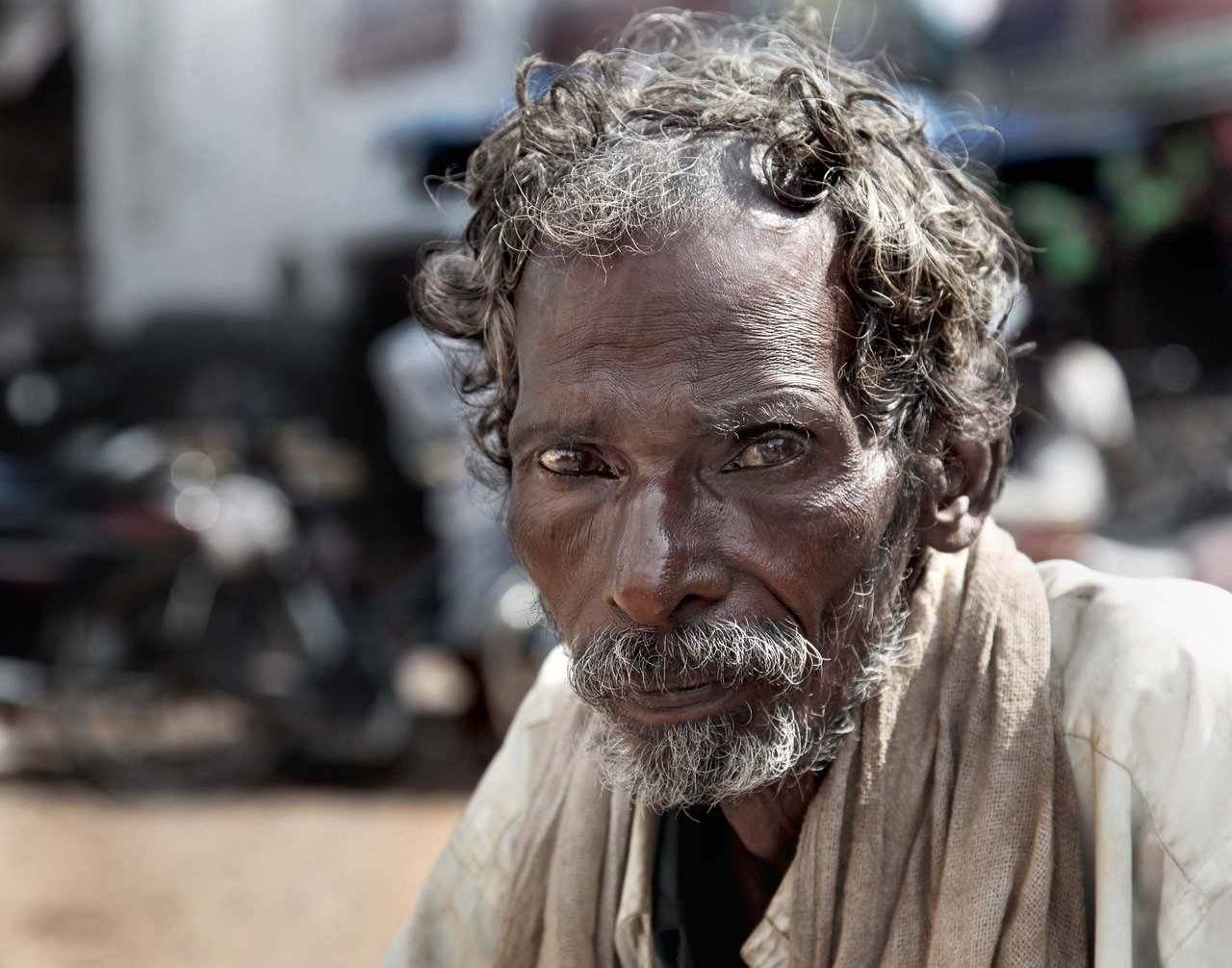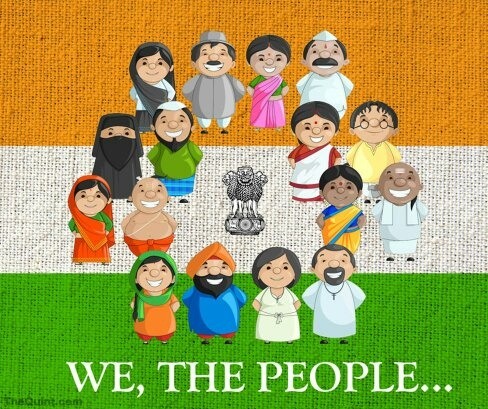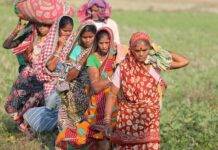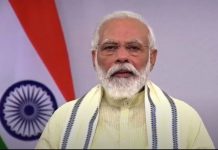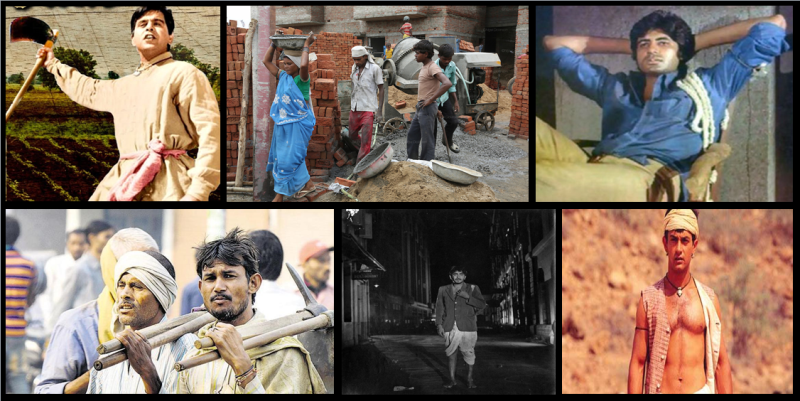Situ is a 45-year-old rickshaw puller from Khunti district of Jharkhand who lives in Ranchi. Since the Nationwide lockdown had started from 25th March 2020, he is out of work and his savings are not enough to keep him and his family going. His wife Asha, who used to work as a domestic help in a gated community has not only been asked not to come for work but also has not received any wage for the last two months. In these desperate times, they have been forced to borrow money from his friends and relatives to sustain themselves.
He queues up every day for a one-time meal which is being distributed by a local group. He asks me teary-eyed, “How long I can survive like this?”. Situ’s only son works as an unskilled labourer in a factory in Rajasthan. He has not been able to come back home due to the lockdown and is waiting in desperation for his chance to board the ‘special shramik trains’ which are taking migrant workers home.
This is not an isolated story but a story representing the precariousness of life among the large sections of the Indian population who nominally have full citizenship but their lives are marked by uncertainty and the everyday struggle to survive.
The visuals of thousands of migrant workers walking home in scorching summer heat constantly being brutalised by police forces are flooding the news and social media. Many have died while having been forced to undertake this long walk home.
When the lockdown was hurriedly announced on 24th March 2020 by the prime minister Narendra Modi giving 1.3 billion people only four hours to prepare for initial twenty-one-day lockdown, creating chaos almost everywhere.
Millions of migrant workers who work in the informal sector in most sub-human conditions to eke out a living for themselves and keep the wheels of the Indian economy rolling were completely invisibilized and abandoned by the state when the announcement of the lockdown to stop the spread the contagious coronavirus was made. The abandonment of the migrant labourers and daily wage workers who were going to experience the maximum suffering due to the virus and the state’s response to contain the virus was startling and expected at the same time
Startling, because the ideal of Hegelian ‘ethical state’ was supposed to take care of its vulnerable population, however a cursory glance at the actual functioning of the Indian state would tell us that their abandonment was on expected lines. The dilution of labour laws by various state governments and move towards increased privatization during the present crisis speaks aloud about the nature of the Indian stat and its priorities.
The lockdown 4.0 is underway and the streams of thousands of migrant labourers could still be seen walking hundreds of kilometres to reach home. It seems like the suffering of these people has no end, will there ever be, one is forced to think.
The state’s efforts to bring them back home are inadequate and full of bureaucratic hurdles. The migrant workers have lost their source of income and faced with incapacity to pay their rents and arrange food for themselves have no option but to head back home. The fear of getting infected by the virus is least of their concern when they know that the virus of hunger is already staring at their face. The words by a migrant worker while talking to a news reporter gives us insight into the extent of suffering, he says that he wants to reach home at any cost, even if he dies after reaching his village, he would at least get a proper funeral. We lack the vocabulary to express their suffering and humiliation, this lack signifies society’s inability to empathise with them
The invisibility of migrant worker in the state’s response to the pandemic eventually made them hyper-visible when they appeared on the streets and railway tracks of the country desperately trying to get back home. While the more privileged groups consumed their suffering and humiliation through their TV screens and social media apps, the poor workers walked with their bruised and battered feet and empty bellies, constantly being abused and humiliated by police forces en route.
Sixteen people were crushed to death on 7th May 2020 by a freight train while they slept on the railway tracks exhausted due to their long walk and trying to evade policemen who were patrolling the roads. This shocking news created a gush of uproar in the media and among the privileged groups but soon this uproar disappeared into oblivion. Migrants continued to walk and the state’s indifference continued.
From the start of the contagion and the state’s response to contain its spread we were constantly reminded by our political leaders and experts that we are all in the same boat as the virus could infect us all, nobody was not at risk. This assertion was partly true as anyone could be infected with the virus but the disproportionate amount of suffering due to state’s response to control the virus was supposed to be endured by the marginal groups – migrant workers, daily wage workers, poor and homeless (largely belonging to lower castes and Adivasis).
The most vulnerable section of the population was abandoned without any safety net to bear the brunt of hunger, pain and unimaginable suffering while the privileged geared to ‘work from home’.
A simple fact that a stringent lockdown and call for ‘social distancing’ would mean human compression from large sections of the population living in slums and poor localities did not strike our policymakers. It was a clear sign that certain lives were more important than others in the eyes of the state.
Suffering is an everyday reality for poor workers but the kind of humiliation meted out to them in this hour is reminiscent of the refugee crisis in different parts of the world. Visuals of injured migrant workers from Jharkhand forced to travel in an open truck with dead bodies wrapped in tarpaulin sheets surfaced bearing testimony to inhuman treatment of the migrant workers by the state. The visuals symbolised how migrant workers were denied dignity in life and death. Their death did not break the vicious cycle of suffering and humiliation which marked their life.
Why is the state so indifferent to the pain and suffering of migrant workers? Why the state’s efforts to help the migrants reach home is full of confusion and lethargy? Why can’t the society empathise with the poor migrant workers?
Large sections of the migrant workers and their plight form the dark side of the story of India’s economic growth in the neoliberal era. Privatization and increasing apathy towards the agricultural sector combined with unequal regional development forced millions to migrate to big cities and business hubs for better prospects in life.
Majority of them already suffering the double indignation through the decline of the rural economy and increasing exploitation under the hierarchical social structure. However, such large numbers could not be assimilated into the formal sector, moreover, they lacked adequate education and skills to seek a better future in the formal sector of the economy.
The large army of ‘surplus workers’ entered the informal sector at wages barely enough to keep their bodies and souls together. They formed the essential and expendable ‘excess population’ whose exploitation was invisible in the growth story of the India economy. The larger plot of this story is explained by David Harvey’s concept of ‘accumulation by dispossession’.
After the lockdown was imposed migrant workers became ‘redundant population’, they could not be exploited anymore since all socio-economic activity was halted. Achille Mbembe in his book Black Reason aptly captures the suffering of the migrant workers in the neoliberal era by arguing that, “There are no more workers as such. There are only labouring nomads. If yesterday’s drama of the subject was exploitation by capital, the tragedy of the multitude today is that they are unable to be exploited at all. They are abandoned subjects, relegated to the role of a “superfluous humanity.”
The cessation of exploitation of the migrant workers led to their abandonment during the lockdown, suffering, humiliation and even death becoming part of their fate.
The incessant confusion that marks the state’s effort to help migrant workers and daily wage workers is not an unexpected turn of events. Such confusion is the part of the script which forms the background mystery that allows the state to abandon the vulnerable groups during periods of crisis. The death and suffering should look inevitable according to the state’s script. The role of the state in the continued suffering of the vulnerable groups is rendered invisible through the illusion congealed by the state through confusion at various levels of the state machinery.
Also, complaint media and plaint citizenry have heavily compromised people’s ability to empathise with others and seek accountability from the state. This tendency is exemplified by the story of 15 years old girl Jyoti Kumari who cycled from Gurugram to Bihar (1200 km) with her disabled father seated in the back carrier of the bicycle. She has been invited by the Cycling Federation of India for trials and her heroism has also been noticed by Ivanka Trump. Indeed, she performed a heroic deed but media and people should ask the more important questions about the circumstances that forced her to undertake such a desperate journey. Such stories cannot be a cause for national pride but should evoke feelings of collective shame. We often translate the endurance of pain and suffering by the poor into heroic deeds absolving ourselves of the shame and guilt and exculpating state from its responsibility.
The words of a migrant worker reverberate in the ears while I write, “at least don’t beat us if you can’t help ease our pain”. Such words would haunt our polity and society for a long time for creating a spectacle of pain, suffering, humiliation and death of the most vulnerable population during most vulnerable times. When future historians would write about the most inhuman forced migration of population during the pandemic, they would be aghast at the passive citizens and cruel state that committed such injustices in the name of saving lives.
Kunal Shahdeo is a Doctoral Researcher at IIT, Mumbai.

